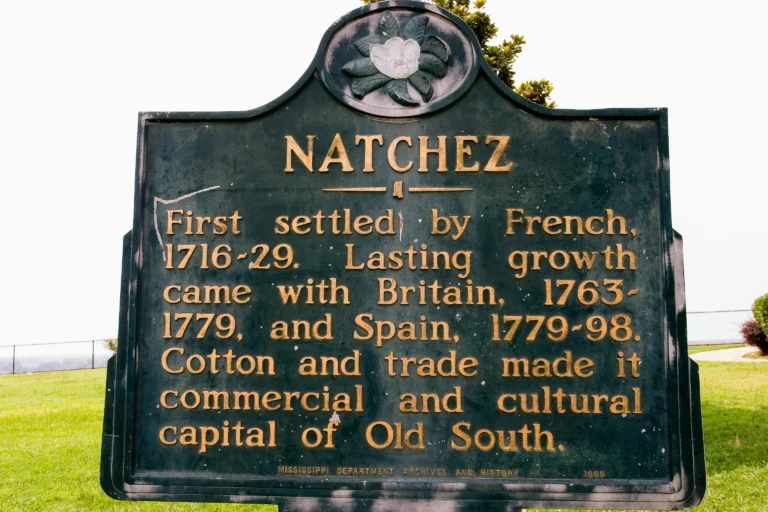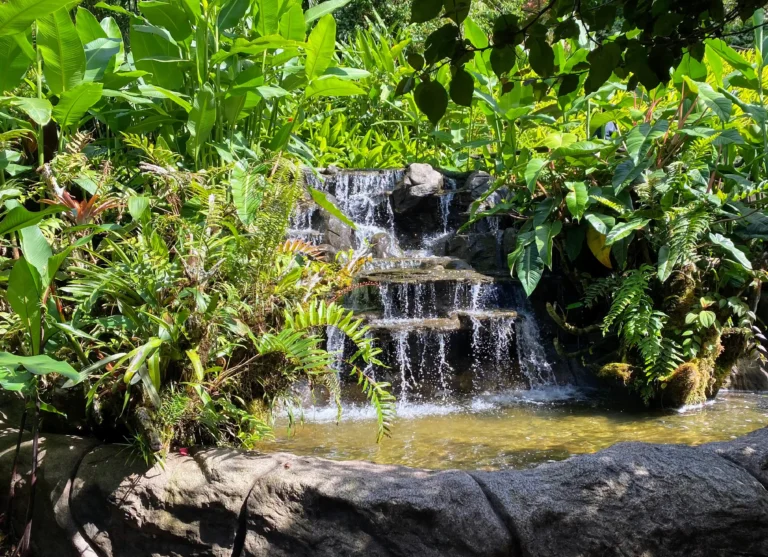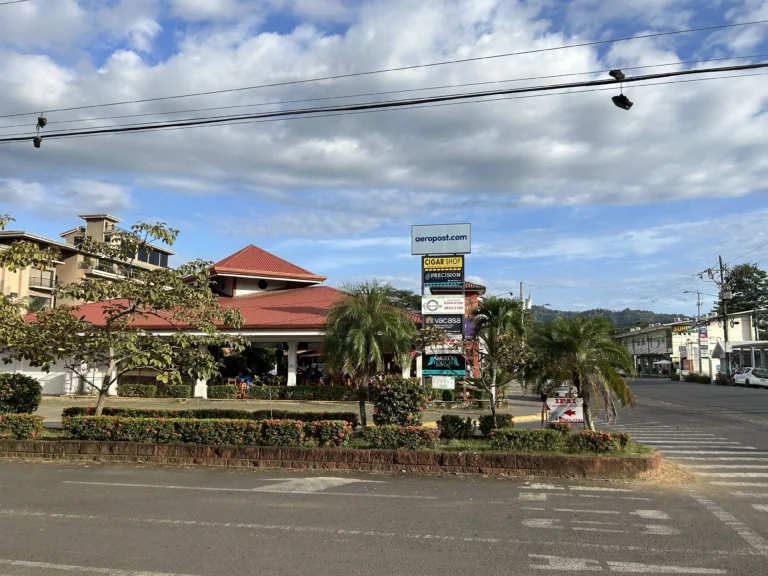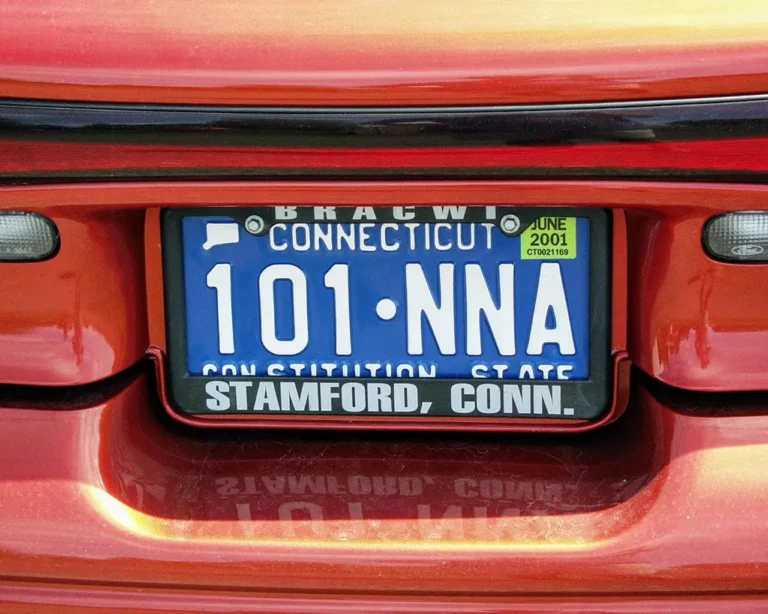After filling the gas at the price of $1.79 per gallon next to Sun Studios, we continued our trip to the south. We were tired of speedways and therefore chose to drive on U.S. Highway 61, also known as the Blues Highway.
The Great River Road passes through beautiful nineteenth-century river towns, sleepy villages, and natural areas rich in wildlife. After sunset, we arrived in Vicksburg, where we found a nice motel for $44. In the morning, we walked along the shores of the Mississippi River. The Mississippi River, derived from the old word missi-sipi, meaning’ big river,’ is the second-longest river in the United States. The river was huge. After breathing in the impressions of the big river, we continued towards the south. Our goal today was to arrive in New Orleans and see a lot on the road.
We stopped at the Grand Village of Natchez Indians. The Natchez Indians inhabited what is now southwest Mississippi until the culture reached its pinnacle in the mid-1500s. According to historical and archaeological evidence, the Grand Village was their main ceremonial center. There is not much left to see, but you can still get the feeling of reading and walking there. The most impressive was Great Sun’s Mound.
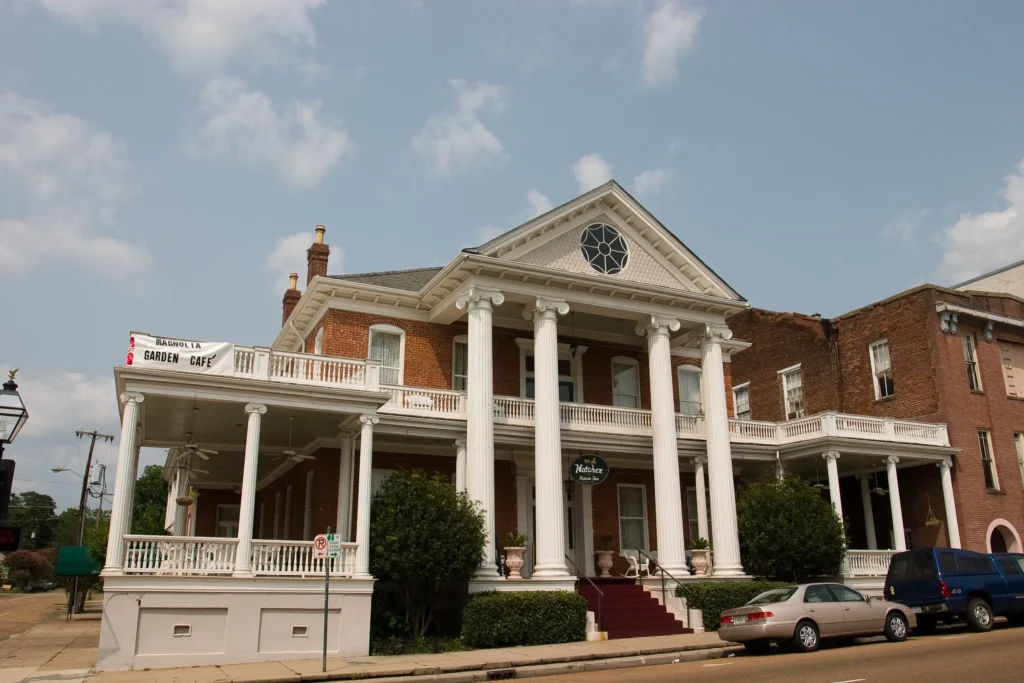
Our main stop that day was in Natchez, MS, the first capital of Mississippi. Before the Civil War, Natchez had the most millionaires per capita in the U.S., and it shows. You can see more than 500 luxurious antebellum houses inside the city limits. So much antebellum finery still exists because Natchez, unlike Vicksburg, surrendered to Grant’s army almost without a fight. Many antebellum mansions are open to the public.
Natchez had one of the busiest slave markets in the south. Thousands of enslaved people worked on the local plantations. The city of Natchez is so well maintained that walking on the streets brings you back to old age. You can also take a horse carriage to deepen the feeling.
Visiting Natchez, Mississippi. What to Expect and Things to Do
Touring antebellum homes
Natchez is home to many beautifully preserved antebellum homes, including Longwood, Rosalie, and Stanton Hall. These homes were built during the antebellum period (the period before the American Civil War) and are considered architectural masterpieces.
Longwood: Longwood is considered one of the most unique and fascinating homes in America, but it was never completed due to the outbreak of the Civil War. The house features octagonal towers, a dome, and a unique circular stairway.
Rosalie: This grand mansion was built in 1823 and features a beautiful Greek Revival architectural style. You can tour the home and learn about the history of the family that lived there.
Stanton Hall: This grand mansion was built in 1857 and features a mix of Greek Revival and Italianate architectural styles. You can tour the home and learn about the history of the family that lived there.
All of these homes offer tours that allow you to step back in time and learn about the lives of the people who lived there during the antebellum period. You can see the original furnishings and architecture and learn about these homes’ history and the people who lived in them.
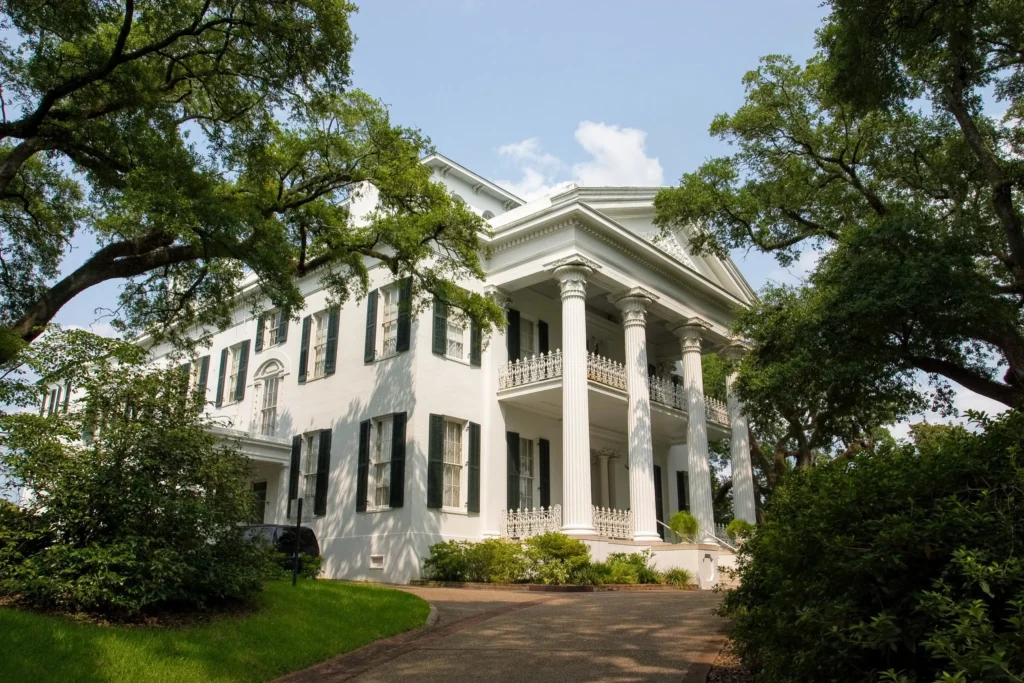
Visiting historic plantations
You can tour historic plantations such as Melrose and Monmouth, which offer a glimpse into the lives of the people who lived and worked on these properties during the antebellum era.
Melrose: Melrose is a historic plantation home that was built in 1833. The house features beautiful Greek Revival architecture and was home to many prominent families throughout its history. You can tour the home and learn about the history of the property and the people who lived there, including information about the enslaved people who worked on the plantation.
Monmouth: Monmouth is a historic plantation home that was built in 1818. The house features beautiful Federal architecture and was home to many prominent families throughout its history. You can tour the home and learn about the history of the property and the people who lived there, including information about the enslaved people who worked on the plantation.
These plantations offer an opportunity to learn about the history of slavery and the lives of the enslaved people who worked on these properties. You can see the original architecture of the homes and learn about the lives of the plantation owners and their families. They also offer an opportunity to gain insight into the lives of enslaved people, their daily routines, and the impact of slavery on their lives.
Exploring the Natchez Trace Parkway
The Natchez Trace Parkway is a 444-mile scenic byway that runs through Mississippi, Alabama, and Tennessee. It follows an ancient trail used by American Indians, European settlers, and, later, American pioneers. The parkway offers beautiful views of the Mississippi countryside and is a great place to hike, bike, or drive.
The parkway has several overlooks, picnic areas, and hiking trails, which allow you to enjoy the region’s natural beauty. You can also stop at visitor centers to learn about the history and culture of the area.
The parkway also offers a chance to experience the region’s wildlife, including white-tailed deer, wild turkey, and various bird species.
In addition to the natural beauty, the parkway also has several historic sites and structures along the route, like the Meriwether Lewis Memorial, the Pharr Mounds, and the Mount Locust Inn and Plantation. The Mount Locust Inn, dating back to the late 1700s, is the only remaining original structure along the Natchez Trace and offers an opportunity to learn about the history of the trail and the people who used it.
Visiting the Natchez City Cemetery
It is the final resting place of many notable figures from Natchez’s past, including Confederate soldiers, wealthy plantation owners, and other prominent citizens.
The cemetery is home to various grave markers and monuments, including elaborate mausoleums, statues, and headstones. Many of the graves date back to the 18th and 19th centuries and offer a glimpse into the lives of the people who lived in Natchez during that time.
One of the most notable graves in the cemetery is that of Confederate General Lloyd Tilghman. Tilghman was a career military officer and served during the Civil War. He died during the Siege of Vicksburg.
The cemetery also has a section dedicated to the enslaved people who lived and worked in Natchez. This section is known as the “Negro Ground,” and it’s a powerful reminder of the history of slavery in the United States.
Dining and shopping
Natchez is also great for enjoying delicious southern cuisine and local shops.
When it comes to dining, Natchez offers a variety of options, from casual to fine dining, with an emphasis on traditional Southern cuisine. Some popular restaurants include:
- Carriage House Restaurant, which offers a fine dining experience with a menu that features locally-sourced ingredients.
- The Eola Hotel Restaurant, which serves a mix of contemporary and traditional southern dishes
- Fat Mama’s Tamales is a casual spot that serves delicious tamales and other southern favorites.
Enjoying the great outdoors
Natchez-Under-The-Hill is a great place to stroll along the Mississippi River, enjoy the views and watch the boats come in. Natchez-Under-The-Hill is a historic district located at the base of the Natchez Bluffs. It offers a unique perspective of the Mississippi River.
The area was once a bustling port and commercial center, but it fell into decline in the 20th century. Today, it’s a popular spot for visitors to take in the views of the river and the bluffs, watch the boats go by, and learn about the area’s history.
You can also take a guided boat tour of the Mississippi River to see the historic homes and plantations that line the river’s banks. These boat tours offer a unique perspective of the city and allow visitors to learn about the area’s history.
Additionally, Natchez has several golf courses, which offer the opportunity to enjoy a round of golf while taking in the area’s beautiful scenery.
Natchez Festival of Music
The Natchez Festival of Music is an annual event. The festival features a variety of live music performances, including jazz, blues, gospel, and classical music. The festival takes place in the spring and typically runs for several weeks.
The festival is held in various venues throughout the city, including historic homes, churches, and other locations. Performances take place indoors and outdoors, and the festival features local and national musicians.
The Natchez Festival of Music has been held for over 30 years and has become a significant event in the city; and attracts visitors from all over the country. The festival provides an excellent opportunity to appreciate the rich musical heritage of the Mississippi and enjoy the unique blend of cultures that have shaped the region.
In addition to the Natchez Festival of Music, there are also several annual festivals and events, like the Natchez Literary and Cinema Celebration, the Great Mississippi River Balloon Race, the Natchez Farmers Market, and the Natchez Christmas Festival, which offer visitors a chance to enjoy live music, local food and purchase local crafts and souvenirs.
Natchez Grand Village of the Natchez Indians
The Natchez Grand Village is a historic site that offers a glimpse into the lives of the Natchez Indian people and their culture, which existed in the region before the arrival of Europeans. The Natchez Indians were one of the Southeast’s most advanced and complex societies. Their legacy is still present in the region today.
The Natchez Grand Village is a reconstruction of the main village of the Natchez Indians, located on this site in the early 18th century. The village includes several reconstructed buildings, including a temple, a palace, and several other structures used for various purposes.
Visitors can explore the village and learn about the daily life of the Natchez Indians, including their social structure, economy, religion, and political system. The village also has a museum that features exhibits on the Natchez Indians, including artifacts excavated from the original village site.
The story continues in New Orleans.
You may find also worth reading:
